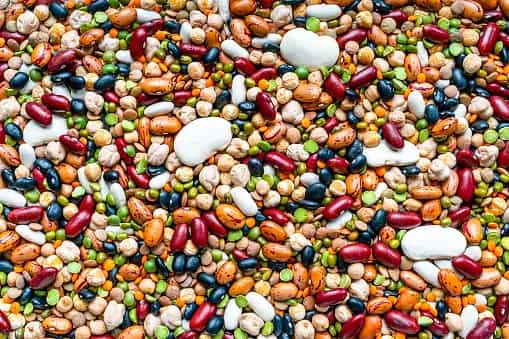Have you ever wondered why legumes and lentils are soaked before cooking? Most people soak lentils as part of their culinary tradition. However, the lesser-known rationale for this has a detailed analysis in Ayurvedic texts. It might be news for many to know about this fascinating fact concerning soaking legumes and lentils.
Soaking lentils has long been a part of the Indian cooking tradition, and there are various benefits to doing so, before cooking, according to Ayurveda. It helps with digestion and nutrient absorption. Isn't that the primary reason we eat them? We need nutrients. Soaking is the best option if you want to absorb the most nourishment. It also gives the legume prana (life). Furthermore, it eliminates phytic acid and tannins from legumes (which block absorption of nutrition from it and causes bloating). This is why many feel bloated/have gastrointestinal problems after eating rich legumes like rajma.
Why It's Necessary To Soak Lentils?
Often, lentils get polished with dangerous artificial colours and chemicals. The list includes nylon, makhmal, and leather polish to provide a glossy finish. It is one of the reasons why you must thoroughly wash and soak the lentils and remove the harmful outer artificial coatings. In rare situations, faulty cleaning and unsanitary packaging of lentils may leave farming residues such as the pesticide Glyphosate, which has negative health impacts. Glyphosate is a weed pesticide used in agriculture to control weeds and rodents. Washing, soaking and thoroughly cooking lentils ensures it is safe to eat.
Benefits Of Soaking
Soaking lentils and legumes not only improves nutrient absorption but also stimulates Amylase, a chemical that aids in the breakdown of complex starch in lentils and legumes, making them easier to digest. The washing and soaking process removes gas-producing compounds from the lentils and legumes. Furthermore, most legumes are high in complex Oligosaccharides, a type of complex sugar that causes flatulence and gas. Soaking lentils and legumes reduce complex sugar levels, allowing for faster and better digestion and nutrient absorption.

Tips To Soak And Cook Lentils Perfectly
Another reason to soak legumes and lentils for a few hours before cooking is to cut cooking time. In the case of rajma or chole, the time required to soften the lentils is approximately 10-12 hours. Here are some expert techniques for properly soaking and cooking lentils:
Soak whole dals such as moong, tuvar, massor, and urad dal for 8 to 12 hours. Before cooking, always wash them.
Split dals take 6 to 8 hours to soak. However, thick legumes like Rajma, chana, or chole should be soaked for 12 to 18 hours. Only after this period does the cooking gets you to achieve the desired flavour and texture. It is better to soak the lentils and legumes overnight.
In addition, the best time to eat beans and legumes is about noon. So the body has enough time to absorb the nutrients and digest the beans.
Note: The soaking water should not be used for cooking since it contains tannins or phytic acid, which can cause bloating and discomfort. As a result, it is advisable to use that water for plants because it includes nutrients that may aid in growth.


